Alexandra Howard sits in the basement of a Hamilton convention centre eating whitefish out of a Ziploc bag. The makeshift dressing room is packed with dozens of tanned and taut women touching up makeup or pumping resistance bands.
Soon Howard, a 29-year-old from Burlington, Ont., will step on stage in five-inch heels and a custom purple bikini, flexing for a panel of judges at the GNC Live Well Henderson Thorne Natural Classic. The competition, her first, comes after months of juggling intense training along with parenting her three-year-old son and a stressful career as a research co-ordinator at a clinical-trials site.
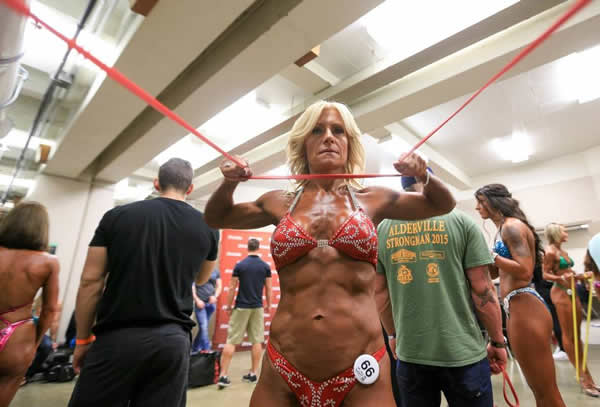
“I always wanted to compete, but I was fixated on the realistic barriers that made it impossible,” says Howard, taking the last bite of her precompetition meal. “Then I decided I wanted to be more of a ‘yes’ person.”
Considered the least bulky of the three women’s bodybuilding categories, the bikini class emphasizes muscle tone and symmetry, but also some level of softness. And as women’s competitive bodybuilding expands its reach across the country, organizers say the bikini category is seeing the biggest spike in participation. It’s the most natural place for rookies to be initiated into the sport.
“We’ve seen an increase of 20 to 30 per cent participation year over year in the bikini category,” says Ron Hache, president of the Ontario Physique Association, the governing body in the province. He says the growth has led the OPA to add new height and age classes, including a grandmaster category for women 45 and older. Georgina Dunnington, chairperson of the Canadian Bodybuilding Federation, says she’s seen similar growth across the country. Eighty per cent of the 500 athletes competing at last year’s nationals were women, she says, including 160 in the bikini division.
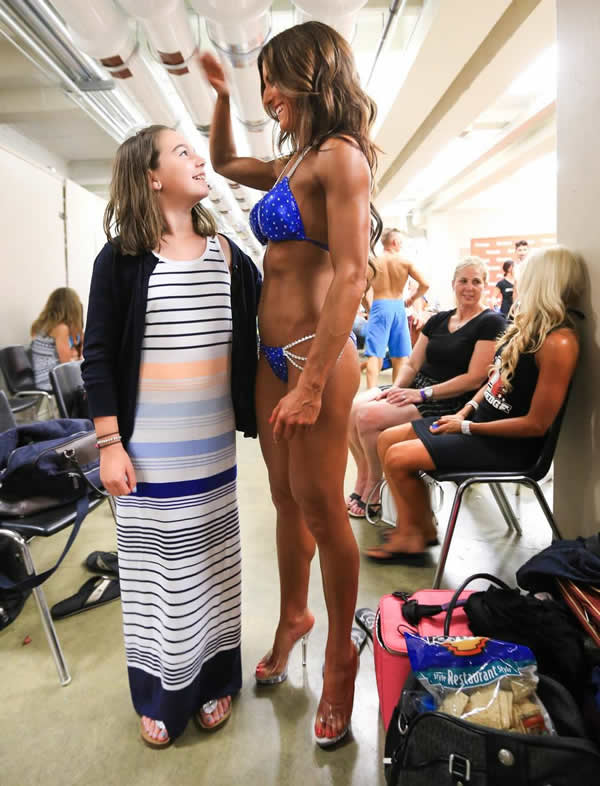
Organizers say the trend is being driven by women over 30, many of them finding their way into the sport through friends at the gym. With the same intensity of people hooked on marathon running or CrossFit, accolytes say what starts as a curiosity can become an all-consuming task, with early-morning workouts and militant nutrition regimes wedged into their roles as moms, business owners and partners.
“I get up at 4 a.m. to train, then I go home and wake my daughter for school,” says Lori Cook, 37, a single mother who also competed in the bikini category in Hamilton on July 11. “After work I’ll hit the gym again. It’s been a real grind.”
Cook gives her daughter, Olivia, a hug while she waits to be judged. “I think my mom is awesome,” the 11-year-old says.
The sport has also ditched the shoulder wiggles and flirtatious gimmicks that kept it from being taken seriously when it was first introduced in 2009. While it may seem odd considering the skimpy attire, the women who compete say what keeps them in it is the challenge – as well as empowerment born from new-found strength.
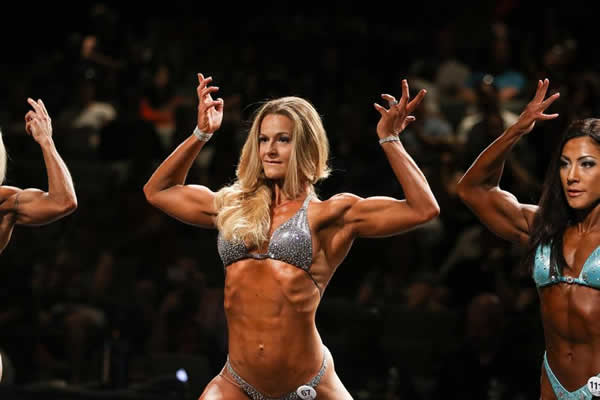
“The sport is attracting more serious athletes now,” says Pamela Knight, 43, a Pilates studio owner who entered the sport last year. “The OPA recently removed certain poses so it’s not an oversexualized flirt show. Judges want to see a strong body without the extras. The sport has really evolved.”
Serious competitors hire a coach a minimum of six months before competition and hit the gym for 90 minutes five or six days a week. They focus on their quadriceps, hamstrings, glutes, back, chest, deltoids and abs depending on the day, followed by cardio. As the time before competition narrows from months to weeks, athletes add posing classes, where they learn to move in heels to a routine that best highlights their muscle tone and symmetry and showcases their stage presence and positive attitude.
Top athletes can compete for a living through magazine contracts and sponsorships, but most competitors pay their costs out of pocket. Trainers cost a minimum of $1,000 for a few months. There are also membership dues ($100 to join the OPA) and registration fees ($125 to enter each category in a contest), as well as the cost of being fitted for a custom bikini, which could range from $300 to $1,000 for one made with Swarovski crystals.
Coaches put their athletes on a carefully monitored energy-boosting, “clean-eating” food plan based on their body-fat percentage, existing conditioning and lifestyle.
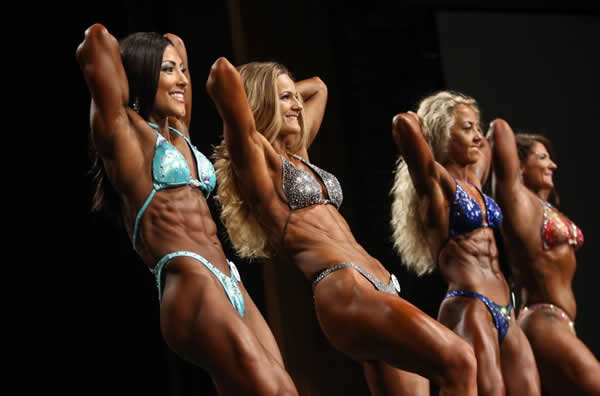
“Preparing and measuring meals takes hours every week,” says Howard, whose friend inspired her to compete. She holds up her bag of fish. “The portions are small, everything is weighed, we cook with little salt or sauce.” Her post-competition agenda includes gorging on burgers, fries, waffles and homemade peanut-butter cheesecake.
Silvia Yoo and Antwane Hamlett, owners of Fitlife Athletics in Toronto, say there are many reasons athletes decide to commit to this lifestyle.
“Some people just want a challenge – competing is something to cross off their bucket list,” says Yoo. Social media is also a big influence. “You see others posting photos of their prep and competition day online and you want to make it a challenge for yourself, too.”
For Knight, who placed third in the bikini masters contest in Hamilton, it was personal. “I’ve been struggling with self-esteem for a long time. The training, the nutrition, the posing, the consistency and the discipline keep me feeling strong and solid emotionally, physically and mentally,” she said. “My self-worth has really improved; it takes a lot of confidence to get judged on stage in a bikini.”
She’s also here to show her 10-year-old son that gender roles don’t have to be rigid. “What is a woman? What does a woman look like? I want to change what people think a woman should be and show them that we can be strong, athletic and sexy.”
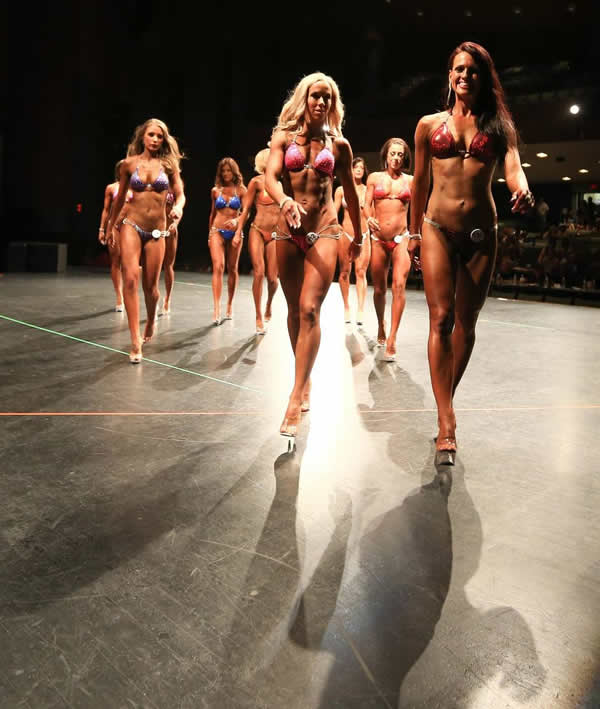
For all the glitz and glory, there can be a dark side to competitive bodybuilding. Steroid use, extreme dieting and excessive exercising can put competitors at risk for serious health complications, including heart attacks. There are two categories in the OPA, natural and open, and the natural is the only one that tests for banned substances. Women who lack proper guidance and coaching can experience other health issues.
“Their hormones could be thrown off balance,” says Yoo. “Women can end up without a period for many years. Their metabolism can slow down and they can experience excessive weight gain postshow. It can also be hard psychologically to return to a body that is higher in body fat during the off season.”
But competitors say they’re out to prove that a fit physique is fabulous. “Who wants to be skinny and frail and starve themselves?” says two-time grandmaster figure competitor Mary Dinner, 52. A grandmother of six, the Brantford, Ont.-based personal trainer started competing two years ago. “I want to look feminine and muscular, fit and athletic at the same time. I want to inspire others. My family thinks grandma rocks.”
Courtesy of: The Globe and Mail
Glenn Lowson photo for The Globe and Mail
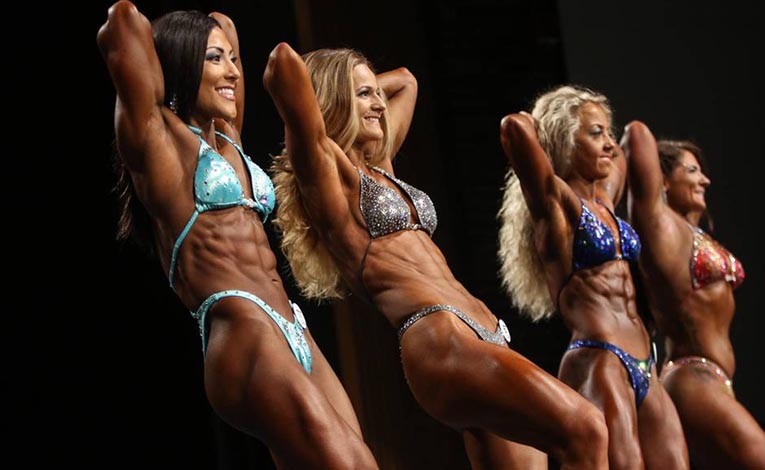
Comments are closed.